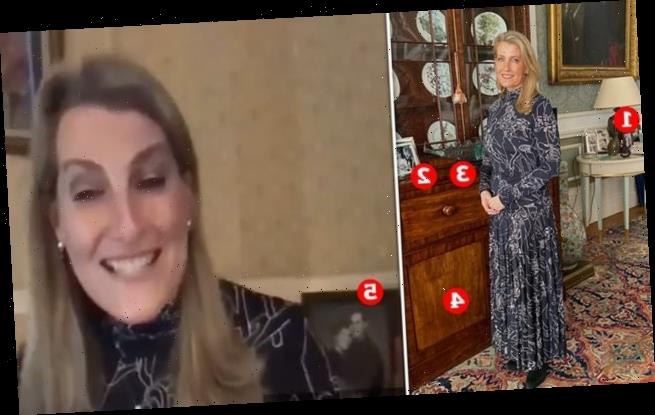COULD Boris Johnson lift lockdown earlier than planned?
The Prime Minister this week gave us his timetable for recovery, highlighting key dates when Covid restrictions might be lifted.
? Read our coronavirus live blog for the latest news & updates…
Life should be more normal from June 21. But scientists say this could be brought forward if the data keeps going in the right direction.
Epidemiologist Neil Ferguson, whose predictions contributed to the first national lockdown, said: “Hopefully what we’ll see when each step happens is a very limited resurgence of infections.
“In that case, there’s a chance we can accelerate the schedule.”
Andrew Hayward, of the Government’s Sage scientific advisory committee, told the BBC: “If we are looking at the data and being driven by the data, we need to be prepared that if things are better than we expect, we may be able to release faster than we expect.”
Jacob Rees-Mogg, Leader of the House of Commons, also offered hope the PM’s Covid calendar could change.
Yesterday, asked if key dates might be brought forward, he said: “Inevitably, governments always have within them a degree of flexibility.”
There is the huge success of the vaccine rollout to consider.
A senior Government source said if the positive results from an early study by Public Health Scotland were matched in England, “that would change the calculations”.
Here are 12 reasons why lockdown could lift earlier.
1
The number of deaths is falling. There were 2,815 Covid deaths here in the past seven days — almost a third fewer than the previous week. Since peaking on January 19, the death toll has been steadily declining.
2
The number of Covid patients in hospitals is dropping. The latest seven-day figures show 10,171 people in hospital with Covid, a drop of almost 21 per cent on the week before. At the beginning of January, the daily average figure for admissions was 4,231. That is now 1,453.
3
The number of cases is falling. In the past seven days, 73,392 people tested positive for Covid, a drop of almost 15 per cent on the previous week. In London, the number of cases has fallen so quickly that the borough of Islington has a seven-day rate below 40 cases per 100,000 people, after a fall of more than 50 per cent in a week. In Liverpool, which was under the severest level of restrictions at the end of 2020, cases are down by a quarter.
4
The R rate is below one again. As of February 19, the national R rate was between 0.6 and 0.9. This key figure describes at what speed the virus is spreading. The lower the number, the slower the spread. We have long been told restrictions can only be eased when the rate is below one.
5
We are testing huge numbers each day. More than half a million people are being tested every day. On September 1, the seven-day average was far lower at 187,286. Nearly four million tests were carried out in the past week.
6
Testing is quicker now. Around 85 per cent of in-person PCR tests come back within 24 hours. For at-home tests and satellite testing centres, such as care homes, 81 per cent of people get their results within 48 hours.
7
NHS Test & Trace is faster too. The independent Health Foundation, which analyses Test & Trace performance, says it took an average of 78 hours at the beginning of February to reach a contact after a case first reported symptoms. That is the shortest time yet in the pandemic. At the start of October, it took 143 hours to make contact.
8
More than a third of adults have had their first dose of vaccine. An amazing 18.4million people have had their first jab and nearly 670,000 a second dose. Health Secretary Matt Hancock says we are on track to deliver the first dose to all adults by the end of July — well ahead of his previous prediction of the autumn.
Azeem Majeed, professor of primary care and public health at Imperial College, London, wrote in the British Medical Journal that at the current rate, all adults will have had both jabs by mid to late September.
9
The vaccine is cutting hospitalisations and deaths. Early modelling by scientists at Imperial College, London, believed the Oxford-AstraZeneca jab would prevent 80 per cent of cases of severe disease.
Warwick University experts, meanwhile, predicted two vaccine doses would block transmission by 60 per cent.
But real-world data from Scotland, gathered between December 8 and February 15, showed the Oxford vaccine reduced the risk of hospitalisation by 94 PER CENT after just ONE dose, while the Pfizer jab reduced hospital admissions by 85 per cent. A third vaccine produced by Moderna is now licensed here but not yet in use.
10
The good news is nationwide. After the previous lockdowns, parts of the country have remained at high risk. But seven-day rolling data shows the picture is now more even, with no areas showing more than 400 cases per 100,000 population. The national average is 116.4 cases per 100,000 people.
11
Cases of the South African and Brazilian variants are falling too. Matt Hancock told Sky News: “In the last week or so, there were just over a dozen new cases, which is far smaller than we were seeing even a couple of weeks ago.” The sharp fall in these extra-infectious variants is down to tougher border measures introduced in recent weeks, such as quarantine hotels, scrapping travel corridors from other countries and pre-departure testing.
There has also been localised “surge testing” in areas where they were detected, such as Kent.
12
Schools will have learned the past year’s lessons. Secondary-school pupils and students at college will undergo three initial Covid tests as they return to face-to-face education, followed by two at-home tests a week. They will be required to wear face masks in lessons.
Meanwhile, primary-school staff will take two at-home tests per week.
There is currently a planned five-week delay betweens pupils returning on March 8 and pubs, shops and restaurants opening in April.
This allows time for the Government to see whether cases will rise significantly with the full reopening of schools.
But with the above measures in place to detect cases and limit the spread in schools, if there is no major spike there could be an argument for opening hospitality and retail sooner than forecast.
GOT a story? RING The Sun on 0207 782 4104 or WHATSAPP on 07423720250 or EMAIL [email protected]
Source: Read Full Article








